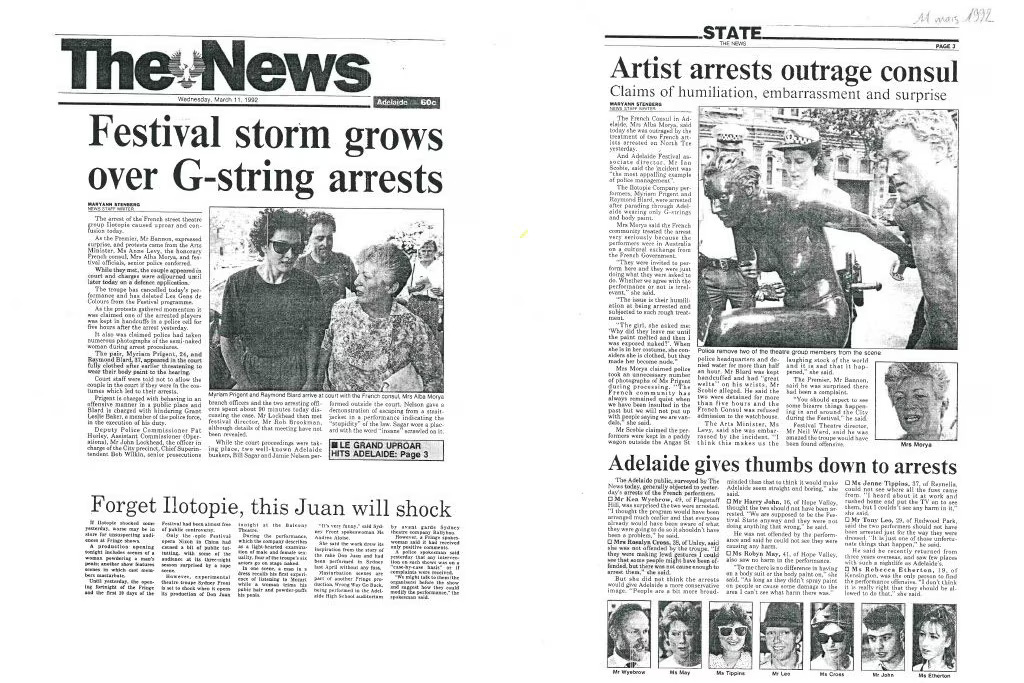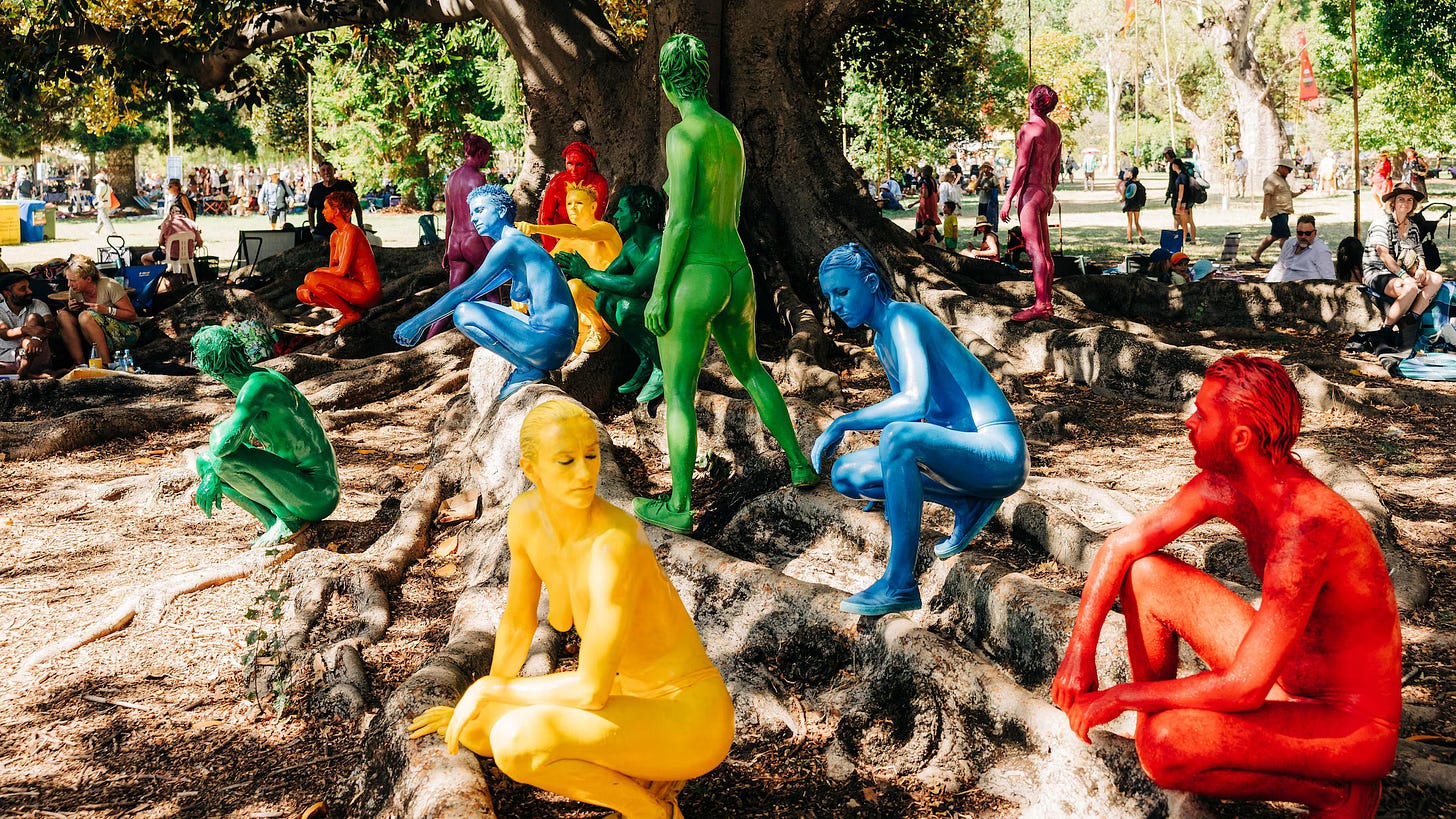Thirty-three years after their arrest, they returned—naked again
Ilotopie’s performance at WOMADelaide is less about provocation, more about presence.
In 1992, two members of the French street theatre troupe Ilotopie were arrested in Adelaide for walking through the city—nude and vibrantly painted—as part of a surreal performance during the Adelaide Festival. The incident sparked outrage, broken teeth, and ultimately led to legal reform around public toplessness in South Australia.
The performers, part of a group known for transforming city streets into dreamlike performance spaces, were charged with offensive behavior and resisting arrest. One was reportedly injured in the police encounter; both were hauled off naked, still slick with pigment, accused even of damaging police uniforms by transferring paint to them. The fallout embarrassed festival officials and prompted then-arts minister Diana Laidlaw to push for changes to the state’s Summary Offences Act, removing language that specifically prohibited the exposure of female breasts.
Now, 33 years later, Ilotopie has returned to the city for WOMADelaide, this time without incident—and with a renewed invitation to question how we view the nude body in public space.
Their long-running project Les Gens de Couleur transforms the human form into walking sculpture: bodies painted in bold pigments move slowly and silently through parks and crowds, inviting awe, discomfort, joy, and reflection. One day celebrates colorful diversity; another, painted entirely in pink, raises quiet questions about conformity, identity, and visibility. On the final day, the group staged a quiet finale in which all performers were loaded into a caged trailer and driven away—an image designed to provoke interpretation rather than deliver a fixed message.
The story of Ilotopie’s return—and the history that shaped it—is the subject of a beautifully produced multimedia feature from ABC Arts. With immersive reporting, archival context, rich photography, and a custom-designed digital layout, it’s a wonderful piece that explores public nudity, treating it—and the artists who wield it—with the reverence and complexity it deserves. 🪐




